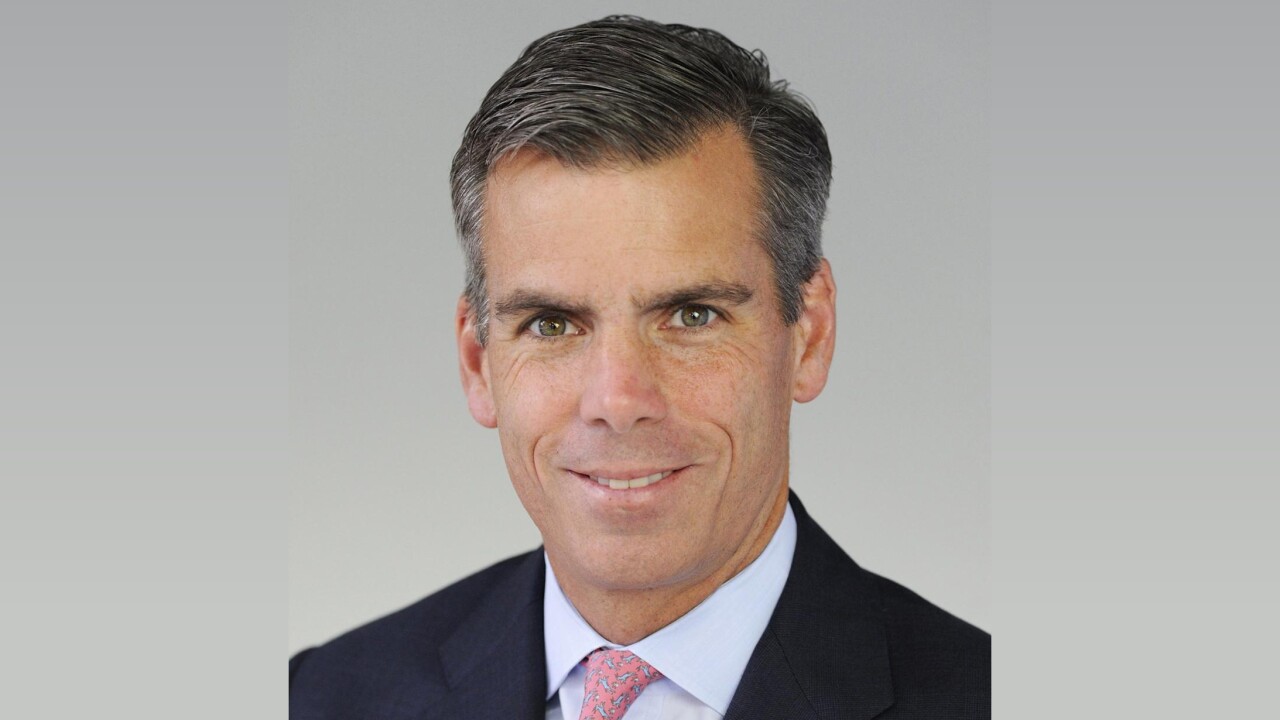After operating a credit union for more than a decade, Thrivent Financial for Lutherans has converted to a bank charter, similar to the structure it used prior to 2012. But a closer look shows the change is more about the company's plans for the future than a return to the past.
On June 2, Thrivent Credit Union became Thrivent Bank, and the company converted all of its credit union members into bank clients. The launch marked the culmination of a four-year application process for an industrial loan company charter, which Thrivent officially received last week.
The new bank's CEO is
"The name of the game for Thrivent Bank is very much to be a growth driver for Thrivent," Milton told American Banker. "If we can position ourselves to offer solutions and help empower clients earlier on their financial journey … we think it positions us to be more effective in how we deliver our particular brand of purpose-based advice."
As part of that strategy, the new bank is entirely digital. Thrivent hopes this will help draw in young clients whose financial needs are still relatively basic but could evolve as they get older — at which point they may seek out Thrivent's insurance or wealth management services.
"What someone needs when they're in their 20s and 30s — obviously that's going to change over time," Milton said. "And if we can show them who Thrivent is earlier, I think we can be better in service to them over time."
Founded as a fraternal benefit society for Lutheran Christians, Thrivent today is a Fortune 500 company that offers customers — regardless of their beliefs — a wide range of financial services, including insurance, wealth management and banking. The company has $194 billion in assets under management, though its credit union was relatively small at the time of the merger, with just over $700 million of assets.

Thrivent's now-defunct credit union was once Thrivent Financial Bank, a Wisconsin-based thrift that the company
Not everyone is convinced that Thrivent is making the right move. Ken Kehrer, one of the principals of Kehrer Group, a consultant to credit unions and banks, said he was "puzzled" by Thrivent's decision.
"There are advantages to being a credit union," Kehrer said. "And I think we may be seeing more banks converting to credit unions than the other way around."
For a parent company like Thrivent, credit unions and banks offer different benefits. Credit unions are tax-exempt as nonprofit enterprises owned by their members. And in a
On the other hand, the nonprofit structure of credit unions limits their customers to prescribed fields of membership, and it constrains the range of products they can offer. No such limits exist for banks. That greater freedom may have appealed to Thrivent, which said it plans to roll out new products soon.
"We're working on some very exciting solutions that we intend to bring to market later this year," Milton said. "That's in the works, and we're still finalizing some of the details."
Another big advantage of having a bank charter is that, unlike in the case of a credit union, Thrivent is the owner — and can therefore downstream more of the parent company's capital. For a company with deep pockets like Thrivent, this opens up big opportunities for growing the business.
"There would be no strict limit on capital, particularly if they were self-funding from their insurance resources to do that," said Chip Filson, the retired co-founder of the consulting firm Callahan & Associates, "whereas in a credit union, you're basically constrained in growth by how fast you grow retained earnings."
Thrivent Bank's CEO confirmed that this benefit was part of Thrivent's calculus.
"Credit unions are owned by their members," Milton said. "Thrivent can invest more meaningfully into its own bank, and intends to do so."
Another factor may involve the particular kind of bank charter Thrivent secured, which exempts it from a substantial amount of regulatory scrutiny. Under its ILC charter, Thrivent Financial is not supervised by the Federal Reserve.
"The huge advantage of the ILC charter is that, in almost all respects, an ILC is a full-service bank … but its parent company is not subject to regulation as a bank holding company," said Michele Alt, co-founder of the Klaros Group, a consulting firm that specializes in financial regulation.
ILC charters have been hard to obtain — in light of opposition by community banks, which say that nonfinancial companies have used the charter to avoid Fed supervision, and a moratorium that the Federal Deposit Insurance Corp. had in place for much of the last quarter century.
Thrivent is the first company to get an ILC charter since 2020, and only the third since 2006.
"I can't tell the story without just taking one more quick victory lap around the fact that we got approval for the charter," Milton said. "That's a rare feat, especially in the last four or five years."
On top of everything else, some experts say 2025 is a tough year to be running a credit union. Peter Duffy, the managing director of the advisory firm SRM, has been speaking with community lenders around the country, and has heard in detail about the myriad challenges credit unions face.
"The Earth has moved under these guys' feet," Duffy said. "The headwinds are margin compression, declining earnings, eroding growth on members and deposits or shares, prodigious new competition from fintech and Goldman Sachs and Amazon and Apple."
In that environment, Duffy said, Thrivent may have decided to "re-evaluate what the best path forward is."
Armed with plenty of capital, plans for new products and a charter that provides certain advantages, Thrivent has chosen a growth path.
"My guess is that they want to be able to have national expansion," Filson said.








